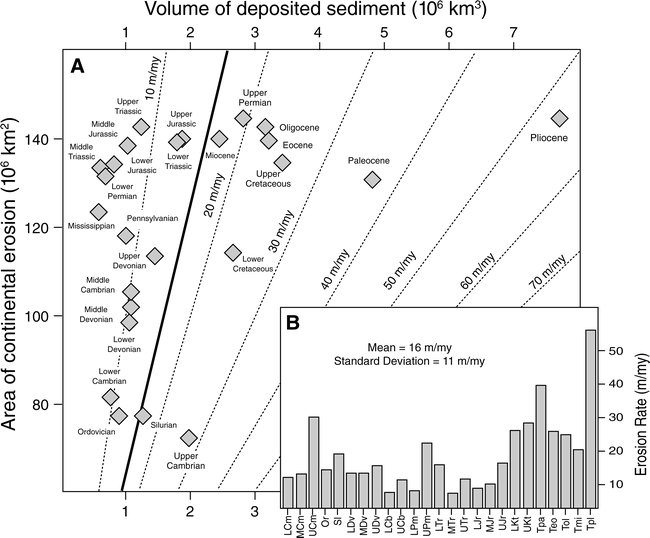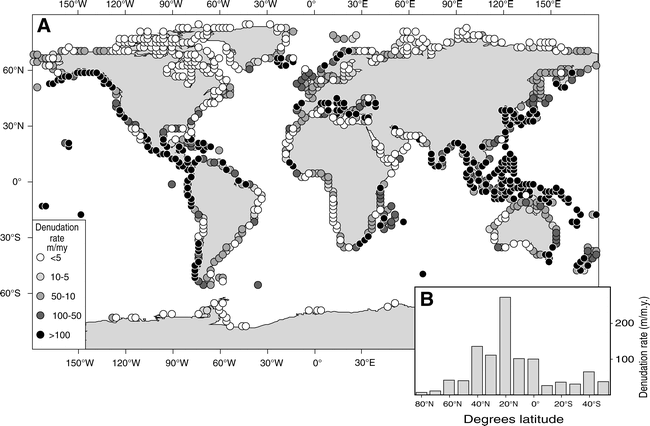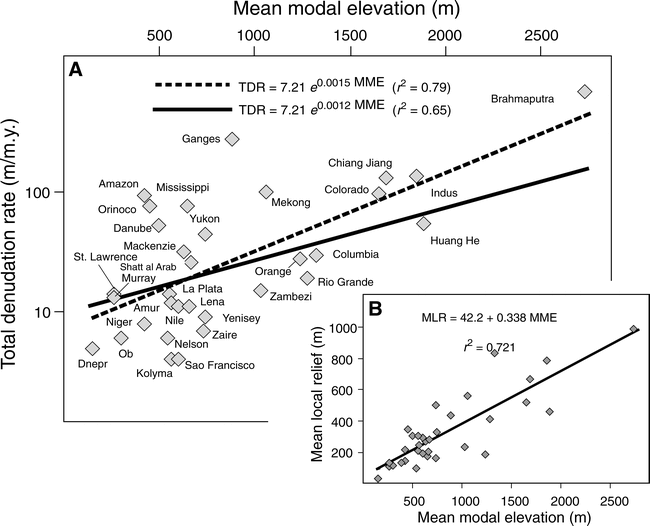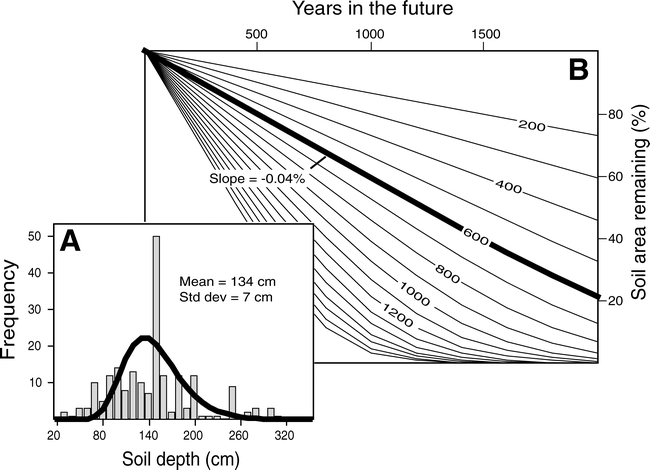
Figure 1. Geologic history of continental denudation from volumes and ages of Phanerozoic sediment. (A) Epoch-interval fluxes of Phanerozoic sediment (horizontal axis; from Ronov, 1983) and areas of continents exposed to subaerial erosion (vertical axis; from Scotese and Golonka, 1992). Dashed diagonals are lines of equal denudation rate; Phanerozoic mean = 16 m/m.y. (heavy solid line). (B) Temporal distribution of denudation rates.

Figure 2. Spatial distribution of continental denudation rates (m/m.y.) needed for total sediment delivery to global oceans. (A) Flux values were derived from suspended sediment fluxes of Ludwig et al. (1996; http://islscp2.sesda.com), assuming a suspended load/bed load ratio of 10 and a particulate load/solution load ratio of 6. These data represent a net weathering flux of `21Gt/yr derived from most ice-free continental land surfaces (`118 ~ 106 km2), and require a mean denudation rate of `62 m/m.y. Note that the highest sediment yields occur across coastal regions at low latitudes and adjacent to regions of rapid uplift (e.g., the Pacific Rim). (B) Distribution of net denudation rates as a function of latitude.

Figure 3. River basin denudation rate and topographic data from Summerfield and Hulton (1994). (A) Relation between mean modal elevation (MME) and total (chemical and mechanical) denudation rate (TDR) for 33 large river basins that drain `39 (52~106 km2) of Earth's ice-free land surface. Heavy dashed line is the best-fit exponential through the data (denudation decreases `0.15 with each meter decrease in elevation); heavy solid line is the relation in best agreement with current estimates of river loads, and yields a global sediment flux of `21 Gt/yr. (B) Linear relation between mean modal elevation and mean local relief (MLR).

Figure 15. Impact of cropland erosion on areal extent of the global soil reservoir. (A) Frequency distribution of soil profile depths from Webb et al. (1991, 1993). (B) Rates of change in the global soil reservoir anticipated from the population of soil thicknesses in A and different mean rates of cropland erosion. Note that a cropland soil loss of 600 m/m.y. (heavy line) results in a decrease in arable land area of `0.04 per year.
kWilkinson,B.H. and McElroy,B.J.(2007): The impact of humans on continental erosion and sedimentation. GSA Bulletin, 119(1/2), 140-156.©ηl